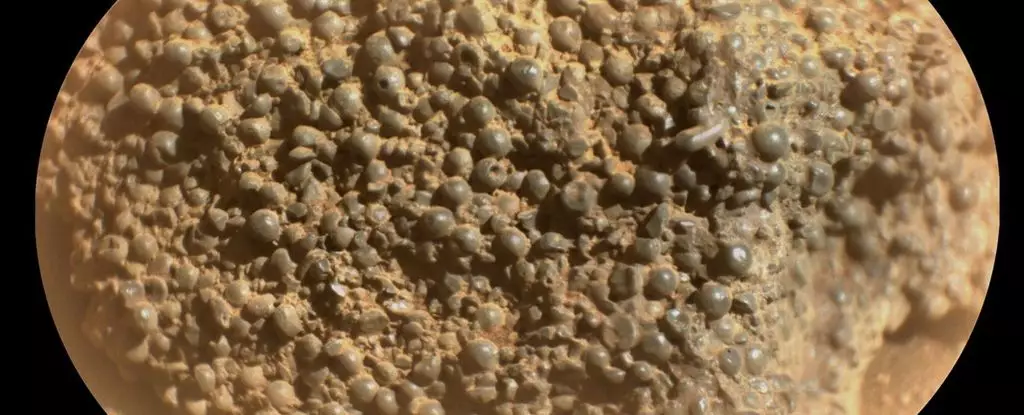In the ever-fascinating quest to decipher Mars’ geological makeup, the Perseverance rover has stumbled upon a rock formation that has left scientists both astonished and bewildered. This intriguing site, known as St. Pauls Bay, was discovered while the rover explored the lower slopes of Witch Hazel Hill on the rim of Jezero Crater. This peculiar rock, described as resembling “bubbly frogspawn,” comprises clusters of tiny dark gray spherules, each measuring about a millimeter in diameter. The striking appearance of St. Pauls Bay raises numerous questions about its composition and formation, making it an unprecedented find in a region already rich with Martian geological wonders.
The Mystery of Formation
The unusual characteristics of St. Pauls Bay set it apart from other known formations on Mars. Back on Earth, similar spherical structures, termed botryoidal formations, arise from various environmental conditions and are primarily formed through the crystallization of minerals. However, the formation mechanisms on Mars may diverge significantly due to the planet’s unique conditions. Unlike terrestrial counterparts typically associated with water or igneous activity, the context of St. Pauls Bay is overshadowed by uncertainty, as it appears distinct from formations like grape agate or hematite found on our planet.
Interestingly, on Earth, formations of this nature often occur under the right pressures and temperatures. In contrast, the Martian climate presents a range of challenges that could give rise to unexpected formation pathways. Some hypotheses suggest that rapid cooling of molten rock—resulting from meteorite impacts or volcanic activities—might also create spherical shapes. However, the absence of definitive evidence to ascertain whether St. Pauls Bay’s formation was catalyzed by these processes creates a conundrum highlighting the complexities of geological interpretations on distant worlds.
The Clarity of Context
An added layer to this enigma is the fact that St. Pauls Bay is classified as a “float rock,” meaning it has been transported from its original location, thus obscuring any context vital to understanding its formation. The very uncertainty surrounding its origin fosters intriguing possibilities about the ancient environments of Mars. As on Earth, sedimentary deposits often serve as vital clues, and the fact that the rover is unable to pinpoint St. Pauls Bay’s birthplace complicates the task of unraveling its secrets.
Despite this challenge, previous observations from orbit have identified a nearby dark rock layer that may potentially harbor the answers to St. Pauls Bay’s origins. This direct correlation from the overhead perspective adds an element of hope for future discoveries. If Perseverance can navigate closer to this potential source, valuable insights regarding the geological processes at play could shed light on an area of Mars otherwise shrouded in mystery.
Future Explorations and Implications
St. Pauls Bay stands as a testament to the myriad possibilities lurking within the Martian landscape. As the exploration of Mars advances, discoveries like this pave the way for innovative scientific inquiry and technological advancements. Delving deeper into these geological mysteries could not only enhance our understanding of Mars itself but also provide parallels to Earth’s history and the conditions that govern planet formation.
With each new find, the narrative of Mars transforms from a barren landscape into one filled with complexity and intrigue, urging scientists to rethink their assumptions about the Red Planet’s geological past. The quest to decipher the enigma of St. Pauls Bay underscores the importance of perseverance in the pursuit of knowledge within the cosmos, representing an exciting chapter in our unending journey of exploration and discovery.

